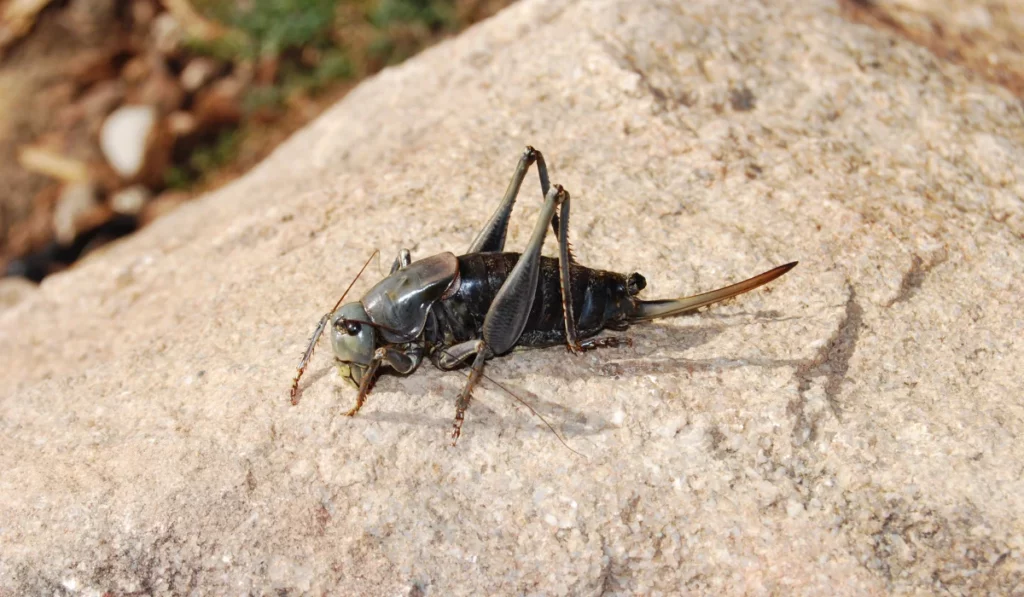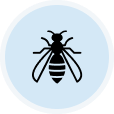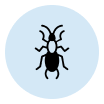
If you’re dealing with Mormon crickets, you already know they’re more than just a nuisance. These large, flightless insects can destroy gardens, crops, and even rangelands. With their ability to swarm in huge numbers, Mormon crickets are challenging but not impossible.
Let’s dive into practical, effective ways to get rid of them and keep your property cricket-free.
Key Takeaways
- Mormon crickets can destroy plants, so use barriers, trenches, and bait to keep them away from your property.
- Natural predators like chickens and eco-friendly options like diatomaceous earth help reduce Mormon cricket populations effectively.
- A tidy yard with trimmed vegetation and sealed gaps prevents Mormon crickets from invading your home and garden.
- Professionals offer solutions for tough infestations and tips to stop Mormon crickets from returning in the future.
3 DIY Strategies to Control Mormon Crickets
Getting rid of Mormon crickets involves a mix of physical barriers, targeted treatments, and good property maintenance. Here’s what you can do:
Start with Physical Barriers
Since Mormon crickets are flightless, barriers are a great way to stop them in their tracks. Smooth surfaces like plastic sheeting or metal fences work well. Place these around your garden or other areas you want to protect.
For added effectiveness, dig shallow trenches. The crickets will fall in and can’t climb back out.
Natural Solutions
If you prefer a more natural approach, sprinkle diatomaceous earth around your garden. This powder dehydrates and kills crickets without using toxic materials.
Another option is to create a sticky trap. A mix of molasses and water in shallow pans attracts crickets, trapping them as they try to feed.
Keep Your Property Clean
Mormon crickets are attracted to overgrown vegetation and debris.
Keep your yard tidy by regularly mowing grass, trimming bushes, and removing weeds. Store compost piles and pet food sources securely to avoid drawing them in.
How Do You Know You Have a Mormon Cricket Problem?
Despite their name, Mormon crickets aren’t true crickets. They’re shield-backed katydids often mistaken for grasshoppers or locusts. These flightless insects have long antennae and can grow up to three inches long.
While they’re common in North America’s rangeland and sagebrush ecosystems, not every cricket hopping through your yard is a Mormon cricket.
But if you’re noticing these signs, you might have an infestation on your hands:
- Swarms of crickets: Large groups moving together across your property.
- Damaged plants: Stripped leaves, chewed crops, and dying vegetation.
- Cricket chirping: A loud, persistent sound from the area they’ve invaded.
Acting fast when you notice them is key to keeping the problem under control.
Why Prevention Matters
Dealing with a Mormon cricket infestation is one thing, but preventing future outbreaks is just as important. This is especially true for homeowners in the western United States, including California, Nevada, Utah, Oregon, and Idaho.
Keep an eye out for nymphs hatching in early spring—this is the best time to act. Address any cricket eggs you find before they mature into the life cycle.
Sealing up cracks and gaps in your home’s foundation, doors, and windows can also stop crickets from moving indoors.
And if you’ve had a problem in the past, consider setting up barriers and traps early in the season to stop crickets before they spread.
When to Call in the Professionals
Sometimes, despite your best efforts, an infestation can feel overwhelming.
That’s where a pest control expert comes in. At Simple Pest Management, we have experience dealing with Mormon cricket outbreaks across California. Our team uses eco-friendly, effective methods to target crickets while keeping your home and property safe.
Contact us today to reclaim your yard and enjoy a cricket-free season!
 1st pest control service just $49. Must schedule service online.
1st pest control service just $49. Must schedule service online.






 You’re supporting a small, local business
You’re supporting a small, local business


